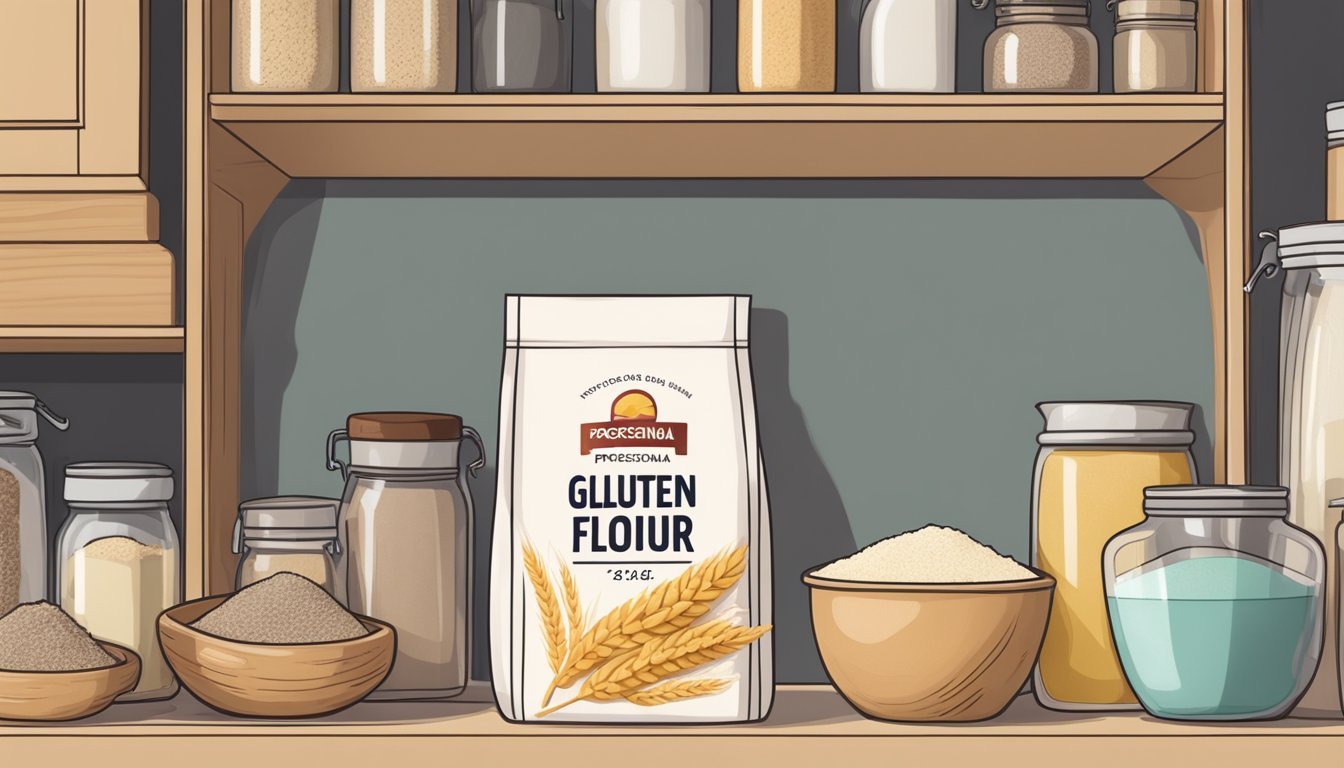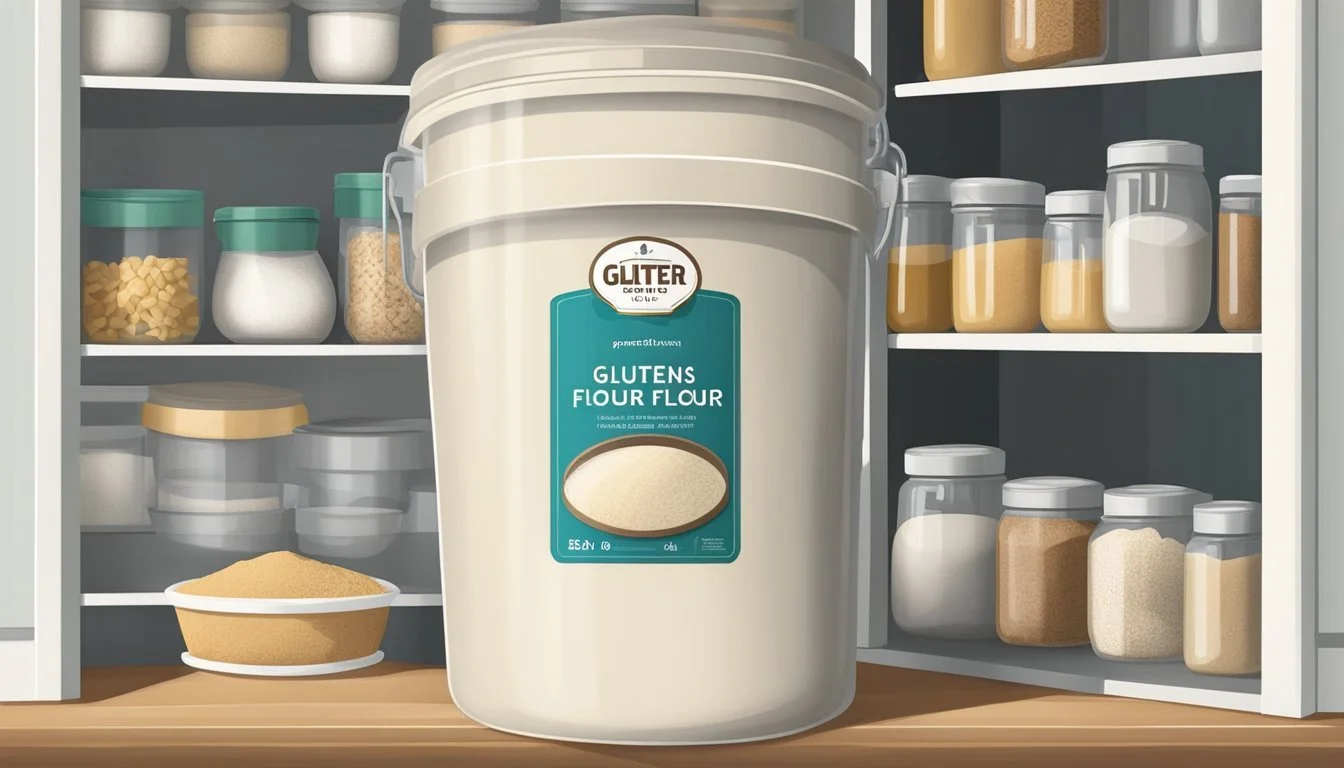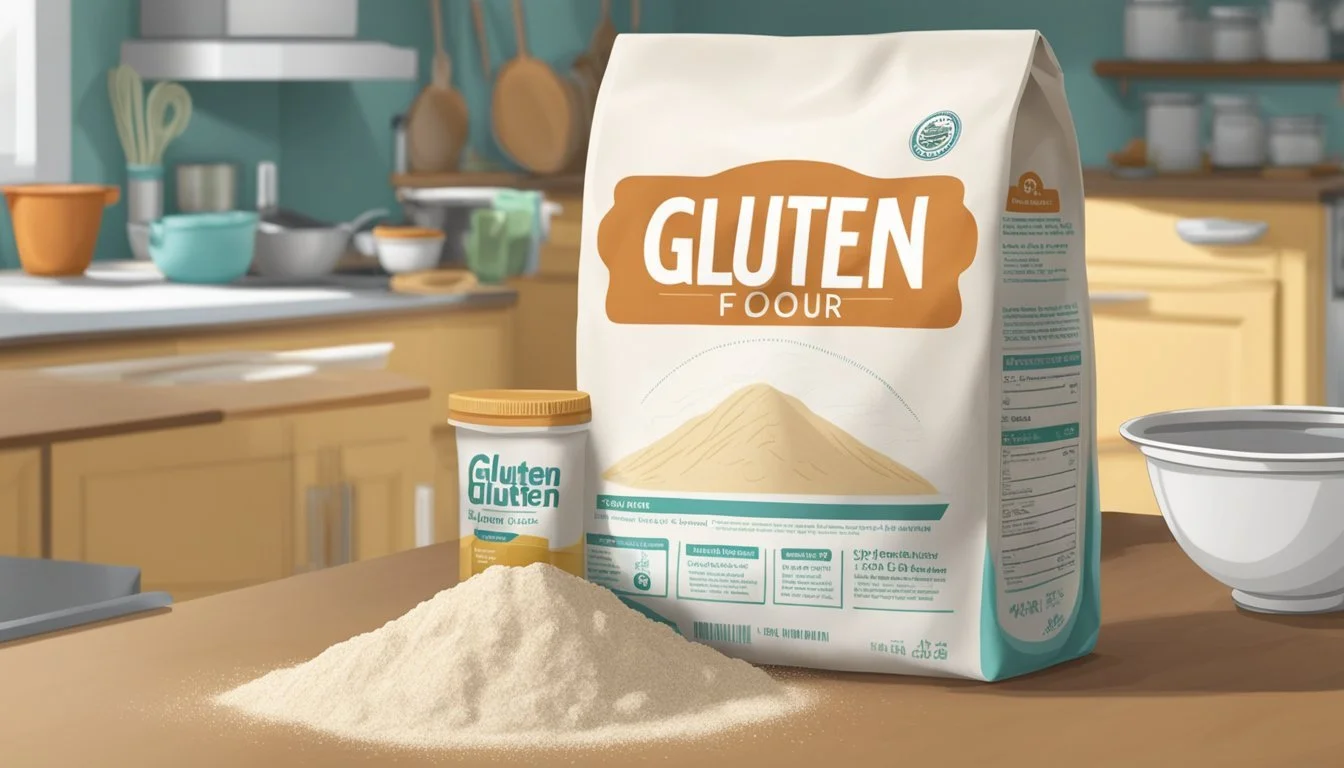How Long Does Gluten Flour Last?
Unveiling Shelf Life and Storage Tips
Gluten flour (how long does gluten flour last?), also known as vital wheat gluten, is a popular ingredient for those who bake bread and other yeast-leavened products. Its high protein content gives dough an elastic texture and helps it rise effectively. Understanding the shelf life of gluten flour is essential for maintaining the quality of baked goods. Proper storage is key to extending the longevity of gluten flour, thus ensuring that its baking properties remain intact.
Under optimal conditions, an unopened package of gluten flour can last a considerable amount of time, often ranging from 7 to 10 years without spoiling. Once opened, however, the shelf life is typically reduced to 6-12 months. To preserve the flour's quality throughout this time, it should be stored in a cool, dark, and dry place, ideally in an airtight container. This minimizes exposure to elements such as moisture and oxygen, which can accelerate degradation.
The consistency and taste of baked items depend heavily on the integrity of gluten flour. Even within its shelf life, the quality of gluten flour can deteriorate if not stored correctly, leading to less satisfactory baking results. Hence, it's crucial for bakers and consumers to be mindful of both the shelf life and the storage conditions of gluten flour to ensure that every baking endeavor yields the best possible outcome.
Determining the Shelf Life of Flour
The shelf life of flour is influenced by several factors, including its type and storage conditions. Understanding these can ensure both quality and safety in its use.
Factors Influencing Flour Longevity
Type of Flour: All-purpose flour typically lasts 3-8 months, while whole-grain and specialty flours have varying lifespans.
Storage Conditions: Cool, dry, and dark environments extend the shelf life of flour.
Packaging: Properly sealed containers prevent exposure to moisture and pests.
Gluten vs Gluten-Free Flour Durability
Gluten-Containing Flour: Tends to have a longer shelf life due to its stable protein structure.
Gluten-Free Flour: Generally lasts 3-8 months, though this can vary based on constituents like almond or rice flour (how long does rice flour last?), which are more perishable.
Identifying Signs of Spoilage
Odor and Appearance: A musty smell or discoloration often indicates spoilage.
Texture: Clumping or the presence of bugs can signal that flour is no longer usable.
Proper Storage Conditions
Proper storage conditions are critical to extending the shelf life of gluten-free flour. This section outlines the ideal environment that should be maintained to keep gluten-free flour fresh and usable for as long as possible.
Maintaining Optimal Humidity and Temperature
Gluten-free flour thrives in a cool, dry place. Humidity and temperature are pivotal; high levels of humidity can introduce moisture that promotes the growth of mold and bacteria. Storage in a pantry or cupboard away from sources of heat, such as ovens or stovetops, is recommended. For long-term storage, placing gluten-free flour in the fridge or freezer can further extend its shelf life, but it should be brought to room temperature before use.
Choosing the Right Container
The choice of container is important to prevent spoilage:
Airtight containers are essential to protect flour from moisture and pests.
Resealable bags with oxygen absorbers can remove air, keeping the flour dry and preventing oxidation.
Containers should be sealed properly after each use to maintain quality.
The Impact of Light Exposure
Direct sunlight can degrade the quality of gluten-free flour over time. It is advisable to store flour in a cupboard or pantry where it is not exposed to light. Containers should be opaque to minimize light penetration or stored in areas that remain dark most of the time. Additionally, containers should not be clear if exposed to any form of light, as prolonged exposure can affect the flavor and texture of gluten-free flour.
Gluten vs Gluten-Free Flour Storage
Understanding proper storage techniques and shelf life differences between gluten and gluten-free flours is key to maintaining their quality and baking properties.
Shelf Life Differences
Gluten-containing flours typically have a longer shelf life than gluten-free alternatives because they contain the protein gluten, which acts as a preservative. Most gluten flours can remain good for up to a year when stored properly. In contrast, gluten-free flours don't have this protein and often include ingredients that can spoil more quickly; their shelf life can range from 3 to 8 months. For gluten-free flours high in oils, like almond or coconut flour, the shelf life is even shorter, generally 3 to 6 months.
Recommended Storage Techniques
Gluten flours are best stored in:
A cool, dry place
Away from direct sunlight
Sealed in an airtight container
For gluten-free flours, storage techniques to extend shelf life include:
Keeping them in an airtight container to protect from moisture and contaminants
Storing in a cool, dry place, ideally with a temperature range of 50°F to 70°F and humidity levels of 15% to 20%
Refrigerating or freezing, especially after opening; this is crucial for oil-rich gluten-free flours like almond and coconut
Using these techniques yields optimal results in baking and prevents premature spoilage due to environmental factors.
Effects of Improper Storage
Improper storage of gluten-free flour may lead to spoilage or contamination. Recognizing the signs of degradation is crucial for food safety and retaining the flour's quality.
Risks of Consuming Expired Flour
When gluten-free flour is not stored correctly, it can become rancid, moldy or spoiled, which may pose health risks if consumed. The oil content in flours, such as those from nuts or seeds, may cause rancidity over time. Rancid flour will often have a sour or bitter taste and an off-smell. Consumption of rancid flour may lead to food poisoning.
Mold growth on flour is another concern and can be visible in the form of discoloration, clumps, or fuzz. Consuming moldy flour is dangerous, as mold may produce mycotoxins, harmful toxins that can lead to serious health issues.
Preventing Contamination and Pests
To avoid the contamination of gluten-free flour:
Store flour in a cool, dry location and in airtight containers to prevent the absorption of moisture, which can lead to clumping and mold.
Regularly check for signs of spoilage, like discoloration, musty odors, or an off-taste.
Keep flours away from strong-smelling foods as they can absorb these odors, altering their taste and texture.
To prevent pest infestations, such as weevils or ants, ensure that the storage area is clean and that the flour is stored in containers with secure lids.
Types of Gluten Flour and Their Lifespans
Understanding the lifespan of various gluten flours is essential for baking success and maintaining quality in baked goods. The shelf life largely depends on the flour's composition, processing, and storage conditions.
Whole Grain vs Refined Flours
Whole grain flours, including whole wheat flour, maintain their bran and germ, resulting in a nutritious but shorter shelf life compared to refined flours. The natural oils present in the bran and germ can cause these flours to go rancid. They typically last:
Whole wheat flour: 1 to 3 months at room temperature, 2 to 6 months in the refrigerator.
Refined flours, such as all-purpose flour and cake flour, are processed to remove the bran and germ, extending their usability. Shelf life for these flours can vary:
All-purpose flour: 6 to 8 months at room temperature, up to 1 year if refrigerated.
Cake flour: Similar to all-purpose, it has a slightly shorter shelf life due to its lower protein content.
Specialty Flours and Their Storage Needs
Specialty flours, such as those made from rye or barley, address specific baking needs and have different storage requirements due to their unique compositions. They should be stored in a cool, dry place, and their lifespan may vary:
Rye flour (how long does rye flour last?): 4 to 6 months at room temperature, longer if refrigerated or frozen.
Barley flour: Typically lasts up to 4 months when stored properly.
Self-rising flour, which includes leavening agents, should be used within 4 to 6 months due to the potential for the chemical leaveners to lose potency over time.
It is crucial for the baker to note the expiration dates on packaging and ensure proper storage to maximize the lifespan of these flours.
Using Flour Beyond the Best-By Date
When a flour's best-by date has passed, it may not rise as well and could affect the final flavor of baked goods. Careful consideration must be made regarding the suitability of using such flour.
Effects on Baking and Taste
Expired flour may compromise the end result of baking. Performance can decline, as the ability to rise may be reduced. This is particularly crucial for products that rely on the fermentation of yeast. The flavor can also be adversely affected, sometimes resulting in a stale or off taste, which may be noticeable in the baked product.
Safety Considerations
Using flour well past the best-by date presents safety considerations. While not inherently dangerous, expired flour can spoil or develop harmful bacteria if it has been exposed to moisture or contaminants. Visual inspection and smell tests can help determine if the flour is safe to use, looking for any signs of discoloration, dampness, or an unusual odor. If any doubts arise, it's best to discard the flour to prevent foodborne illness.
Brands and Additives' Impact on Flour Longevity
Shelf life of gluten-free flour can significantly vary depending on the presence of preservatives and stabilizers used by different brands. These factors are instrumental in determining how long a flour will maintain its quality before spoiling.
Role of Preservatives in Shelf Life
Preservatives are substances that manufacturers add to products to prevent spoilage from microorganisms. Gluten-free flours may contain natural preservatives, such as ascorbic acid or cultured corn syrup solids, which can help maintain freshness for longer periods. Stabilizers such as xanthan gum (how long does xanthan gum last?), in contrast, are added to enhance texture but also play a minor role in shelf life by maintaining the structure of the flour.
Natural Preservatives: Extend shelf life; include ascorbic acid, cultured dextrose.
Stabilizers: Secondary effect on shelf life; include xanthan gum, guar gum. (how long does guar gum last?)
Comparing Different Brands' Shelf Life
When it comes to the shelf life of different brands, ingredients and processing methods become key factors. Comparatively:
Brand A: Uses a blend of rice flour and tapioca starch (how long does tapioca starch last?) with cultured corn syrup solids, offering a shelf life of approximately 9-12 months.
Brand B: Concentrates on natural ingredients without added preservatives, typically lasting 6-8 months.
Brand C: Integrates chemical preservatives, which may extend shelf life up to 12-18 months, depending on the storage conditions.
Brand Ingredients Preservatives Estimated Shelf Life A Rice flour, tapioca starch Cultured corn syrup solids 9-12 months B Various whole grains None 6-8 months C Various starches and grains Chemical preservatives 12-18 months
Preservatives and brand processing practices are critical in assessing the longevity of gluten-free flour. Each brand's formula can affect the durability and freshness of their flour, thereby influencing consumer choice based on usage needs.
Maximizing Flour Longevity
The shelf life of flour can be significantly extended through proper storage practices and by employing certain preservation methods like freezing. These approaches can help maintain the quality of flour for baking and cooking needs.
Tips for Extending Flour's Usability
Storage Conditions: Flour should be kept in a cool, dark, and dry place. Moisture can spoil flour by promoting mold growth, so it’s important to protect it from humidity.
Airtight Containers: Transferring flour into an airtight container can protect against pests and prevent it from absorbing odors or moisture from the environment.
Use of Preservatives: While not commonly recommended for home storage, certain preservatives can extend shelf life if one is making a gluten-free flour mix commercially.
When to Consider Freezing Flour
Long-Term Storage: When flour needs to be stored beyond its regular shelf life—3 to 8 months for gluten-free flours—freezing is an effective option.
Preventing Rancidity: Freezing flour can prevent oils found in gluten-free flours from becoming rancid, which is especially relevant for flours like almond and coconut flour, which have higher fat contents.
By following these guidelines, one can maximize the longevity of their flour and ensure it remains usable for as long as possible.









